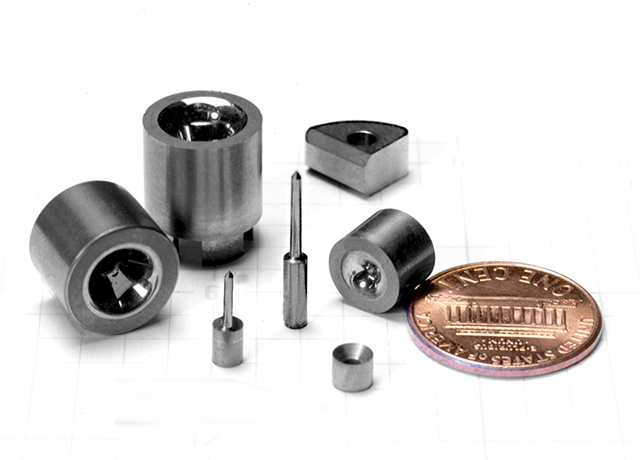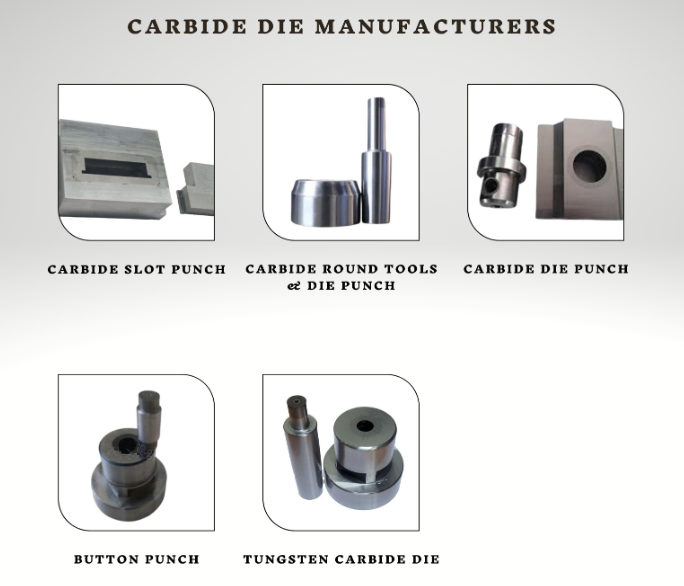Content Menu
● Introduction
● Understanding Carbide Punches and Dies
>> Key Components:
● Advantages of Carbide Punches and Dies
>> 1. Superior Durability
>> 2. Enhanced Precision
>> 3. Cost-Effectiveness
>> 4. Versatility in Applications
● Manufacturing Process
● Applications in Modern Industry
● Maintenance and Care
● Future Trends
● Conclusion
● Frequently Asked Questions
>> Q1: What makes carbide punches and dies superior to traditional steel tools?
>> Q2: How long do carbide punches and dies typically last?
>> Q3: Are carbide punches and dies suitable for all manufacturing applications?
>> Q4: What are the main maintenance requirements for carbide punches and dies?
>> Q5: How can manufacturers optimize the performance of carbide punches and dies?
Introduction
Carbide punches and dies represent the pinnacle of precision engineering in modern manufacturing. These essential tools have revolutionized the metal forming industry, offering unparalleled durability, precision, and performance in various applications. This comprehensive guide explores the advantages, applications, and significance of carbide punches and dies in contemporary manufacturing processes.
Understanding Carbide Punches and Dies
Carbide punches and dies are specialized tools manufactured from tungsten carbide, a composite material known for its exceptional hardness and wear resistance. These tools work in tandem to shape, form, or cut materials with extreme precision, making them indispensable in modern manufacturing operations.
Key Components:
- Carbide Punches
- Carbide Die Inserts
- Precision Die Components
- Carbide Stamping Dies
- Carbide Metal Forming Dies

Advantages of Carbide Punches and Dies
1. Superior Durability
Carbide punches and dies demonstrate exceptional longevity, often lasting up to ten times longer than traditional steel tools. This extended lifespan translates to reduced maintenance requirements and fewer production interruptions.
2. Enhanced Precision
The inherent properties of carbide allow for maintaining tight tolerances throughout the tool's lifetime, ensuring consistent product quality even after millions of cycles.
3. Cost-Effectiveness
While the initial investment in carbide punches and dies may be higher, the long-term benefits include:
- Reduced maintenance costs
- Fewer tool replacements
- Improved production efficiency
- Lower per-part manufacturing costs
4. Versatility in Applications
Carbide punches and dies excel in various manufacturing processes, including:
- Sheet metal stamping
- Cold forming
- Powder metallurgy
- High-precision components manufacturing
- Automotive parts production
Manufacturing Process
The production of carbide punches and dies involves sophisticated processes:
1. Material Selection
2. Powder Metallurgy
3. Precision Grinding
4. Quality Control
5. Surface Treatment

Applications in Modern Industry
Carbide punches and dies find extensive use in:
- Automotive Manufacturing
- Aerospace Components
- Electronics Industry
- Medical Device Production
- Consumer Goods Manufacturing
Maintenance and Care
Proper maintenance of carbide punches and dies ensures optimal performance:
- Regular inspection
- Proper alignment
- Appropriate lubrication
- Careful handling
- Scheduled maintenance
Future Trends
The future of carbide punches and dies includes:
- Advanced coating technologies
- Smart tool monitoring systems
- Improved material compositions
- Enhanced design optimization
- Integration with Industry 4.0
Conclusion
Carbide punches and dies continue to play a crucial role in modern manufacturing, offering superior performance, precision, and cost-effectiveness. Understanding their advantages and proper implementation can significantly enhance manufacturing operations and product quality.

Frequently Asked Questions
Q1: What makes carbide punches and dies superior to traditional steel tools?
A1: Carbide punches and dies offer superior hardness, wear resistance, and dimensional stability. They maintain their cutting edge longer and provide more consistent results throughout their lifecycle, making them ideal for high-volume production environments.
Q2: How long do carbide punches and dies typically last?
A2: Under proper operating conditions, carbide punches and dies can last 5-10 times longer than traditional steel tools. The exact lifespan depends on factors such as application, maintenance, and operating conditions.
Q3: Are carbide punches and dies suitable for all manufacturing applications?
A3: While carbide punches and dies excel in many applications, they are particularly well-suited for high-volume production, precision components, and applications requiring tight tolerances. However, they may not be the most cost-effective solution for low-volume production.
Q4: What are the main maintenance requirements for carbide punches and dies?
A4: Regular maintenance includes inspection for wear or damage, proper alignment checking, adequate lubrication, and careful handling to prevent chipping or cracking. Following manufacturer guidelines for specific maintenance schedules is essential.
Q5: How can manufacturers optimize the performance of carbide punches and dies?
A5: Performance optimization involves:
- Proper tool selection for specific applications
- Maintaining correct operating parameters
- Regular maintenance and inspection
- Using appropriate lubricants
- Ensuring proper alignment and setup
















